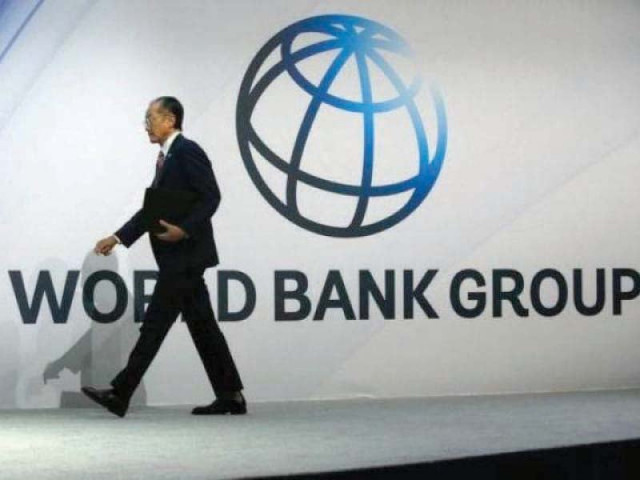World Bank approves $390m loan for Tarbela fifth extension
This will be the lender’s first co-financing project with the AIIB in South Asia

The Board of Directors of World Bank approved the loan to help a sustainable expansion of Pakistan’s electricity generation capacity. PHOTO: FILE
For long, the China-based AIIB and World Bank, based in Washington, had been seen as rivals to each other, but the two lending institutions signed an agreement earlier this year to undertake joint projects.
World Bank agrees to finance Tarbela’s extension
The Tarbela fifth extension will be the duo’s first co-financing project in South Asia.
The AIIB will also extend a $300 million loan for the project, which will be its second project in Pakistan and first in the energy sector. The AIIB may also approve the $300 million this month.
The Board of Directors of World Bank approved the loan to help a sustainable expansion of Pakistan’s electricity generation capacity, according to a handout issued by the local office of the Washington-based lending agency.
The share of World Bank in the total project cost of $826.1 million is 48%. The AIIB will provide $300 million while Water and Power Development Authority and National Transmission and Dispatch Company will arrange the remaining $133.1 million.
The World Bank’s loan is a relatively expensive one with Pakistan due to return the amount in 20 years.
The Tarbela Fifth Extension Hydropower Project will add 1,410MW of low-cost electricity generation during the high-demand summer season. The loan finances the installation of a powerhouse at the existing tunnel five that will enhance the total capacity at Tarbela to 6,298MW. Three units with a capacity of 470MW each would be constructed on tunnel-5, which is on the left bank of Indus River.
The current installed capacity of the 3,478MW Tarbela hydroelectric power stations will increase to 6,298MW after completion of the ongoing fourth extension and the planned fifth extension. The World Bank had earlier given $840 million for the fourth extension.
Fruitful weather? Power output increases by 100MW in Tarbela
The government wanted to complete the fourth extension by June 2017, also having 1,410MW capacity, and paid an extra $51 million to contractors and suppliers. However, the government will still miss the deadline and out of three units of Tarbela fourth extension only one unit is expected to be completed by August 14, according to officials involved in project execution. The remaining units may be ready by the end of 2017.
Work on the fifth extension will be completed in three and a half years from the date of inception. The fifth extension is among half a dozen hydroelectric and nuclear power projects with a cumulative generation capacity of 14,700MW, which would be completed between 2018 and 2023.
For the last many years, Pakistan is facing acute power shortages. In the fiscal year 2015-16, the country’s total generation capacity was 18,760MW during the summer and 14,833MW in winters, whereas the demand remained around 22,880MW.
Pakistan’s power needs are increasing at a growth rate of 7% to 8% per annum. Various estimates suggest that the demand will be 96,000MW by 2029-2030 whereas additional generation is too slow to keep pace, according to World Bank project documents.
Hydroelectric power: WAPDA aims to execute projects swiftly
The Executive Committee of National Economic Council recently approved the fifth extension project at a cost of Rs81 billion on the condition that Indus River System Authority (IRSA) will certify that the expansion would not affect the water flows for irrigation purposes.
The construction of powerhouse on tunnel five would proceed in parallel to the ongoing work on tunnel four in a manner that it would remain operational until the construction of powerhouse on tunnel four is completed and available for water releases for irrigation purposes, said the World Bank. The project also includes the laying of about a 50-kilometre long transmission line for carrying additional generation from Tarbela to the national grid.
Increased supply at competitive prices from tunnel five will support economic growth for all enterprises that use electricity, regardless of size or sector, said Illango Patchamuthu, the World Bank country director for Pakistan. He said that the project will contribute to long term energy security.
In addition to maximising the use of existing facilities and meeting the power needs of the country, the project will also introduce a pilot floating solar power plant over part of the reservoir area, said Masood Ahmad, the World Bank task team leader of the project. He said that the successful completion of the pilot and its possible expansion over the rest of the reservoir surface area could lead to an additional generation capacity of 5,000MW of solar power.
Published in The Express Tribune, September 22nd, 2016.
Like Business on Facebook, follow @TribuneBiz on Twitter to stay informed and join in the conversation.



















COMMENTS
Comments are moderated and generally will be posted if they are on-topic and not abusive.
For more information, please see our Comments FAQ